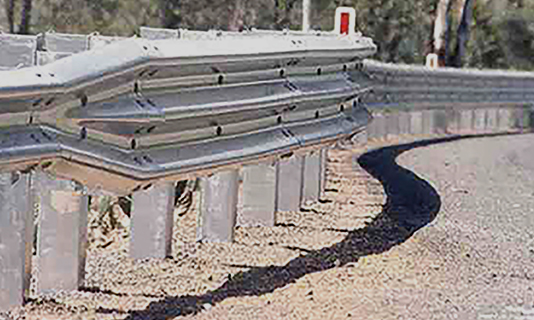The Basic Principles Of Crash Beams
Wiki Article
The Definitive Guide for Crash Beams
Table of ContentsNot known Factual Statements About Crash Beams Examine This Report on Crash BeamsThe Crash Beams StatementsA Biased View of Crash BeamsSome Of Crash Beams
High beams profit drivers on dark roads during the night and at various other times when it is difficult to see (Crash Beams). Improper high beam usage could be unsafe. In Ontario, there are regulations to specify correct use high beams to help avoid hazards that could lead to a serious crashHowever, using sound judgment, you can utilize your high beam of lights safely even if you are unsure of the range. As an example: When you adhere to one more vehicle, turn your high light beams off. Dim your high light beams when you see the fronts lights of oncoming website traffic, Reduced your high beams when rising a hillside Improper high beam usage produces hazards for drivers in approaching cars and the drivers that improperly utilize them.
In this situation, drivers are most likely to collapse into various other automobiles. Drivers might also miss out on other things or hazards in the roadway. Misuse of high beam of lights may likewise cause vehicle drivers to misjudge: How much range they need to brake chauffeurs in this scenario may be not able to quit in time to prevent a crash.
Inflammation can quickly intensify right into more hazardous behaviour. That depends. All motorists owe a duty of treatment to prevent damage to others. When chauffeur neglect leads to an accident that straight causes injury and other losses, she or he might be liable for the damages. Nevertheless, each instance is different.
Getting The Crash Beams To Work

, where a towering crane has been brought in, and a large number of team vehicles and vehicles are blocking the roadway. Some lorries cope much better than others with a lot more severe side crashes , indicating suggesting there is still room area more even more. Side airbags, which today are common on most new traveler automobiles, are made to maintain people from colliding with the inside of the car and with items outside the lorry in a side collision.

To load this gap, we started our very own examination with a various obstacle one with the height and shape of the front end of a normal SUV or pick-up at the time (Crash Beams). NHTSA barrier, displayed in yellow, superimposed over the taller obstacle utilized in the initial IIHS examination In 2021, IIHS overhauled its examination with a more severe crash and a much more practical striking obstacle
The Single Strategy To Use For Crash Beams
It is better to the ground and shorter than the original IIHS barrier but still more than the NHTSA obstacle. Upgraded (left) and original IIHS side test barriers In our initial examination, a 3,300-pound barrier with the approximate height of an SUV struck the vehicle driver side of the lorry at 31 miles per hour.As a result of these changes, the new examination includes 82 percent much more energy than the initial examination. The honeycomb surface of the barrier in the 2nd test is also various. Like actual SUVs and pickups, the new obstacle has a tendency to bend around the B-pillar in between the motorist and rear passenger doors.
The owner area can be compromised by doing this also if the car has a strong B-pillar. In both examinations, two SID-IIs dummies standing for little (5th percentile) ladies or 12-year-old children are placed in the motorist seat and the rear seat behind the vehicle driver. IIHS was the very first in the United States to utilize this smaller dummy in an examination for consumer details.
Shorter drivers have a greater chance of having their heads come right into contact with the front end of the striking vehicle in a left-side collision. Engineers take a look at three variables to identify side rankings: chauffeur and guest injury steps, head protection and structural efficiency. Injury steps from both dummies are utilized to establish the possibility that owners would receive considerable injuries in a real-world collision.
The Buzz on Crash Beams

To load this gap, we initiated our very own test with a different obstacle one with the height and shape of the front end of a regular SUV or pickup at the time. NHTSA obstacle, displayed in yellow, superimposed over the taller obstacle utilized in the original this IIHS test In 2021, IIHS revamped its test with a more severe crash and a more reasonable striking read review barrier.
It is closer to the ground and much shorter than the initial IIHS obstacle however still greater than the NHTSA barrier. Updated (left) and initial IIHS side examination barriers In our original test, a 3,300-pound obstacle with the approximate elevation of an SUV hit the vehicle driver side of the vehicle at 31 miles per hour.
As an outcome of these modifications, the new examination entails 82 percent a lot more energy than the original examination. The honeycomb surface area of the barrier in the 2nd examination is likewise different. Like actual SUVs and pickups, the new obstacle has a tendency to bend around the B-pillar in this content between the motorist and rear passenger doors.
The 7-Second Trick For Crash Beams
The passenger area can be jeopardized this way also if the car has a solid B-pillar. In both tests, 2 SID-IIs dummies representing little (fifth percentile) ladies or 12-year-old youngsters are positioned in the vehicle driver seat and the rear seat behind the vehicle driver. IIHS was the first in the USA to use this smaller dummy in an examination for consumer info.Much shorter motorists have a greater possibility of having their heads come right into contact with the front end of the striking automobile in a left-side collision. Engineers consider three elements to identify side scores: driver and traveler injury actions, head protection and architectural performance. Injury procedures from the 2 dummies are used to figure out the chance that residents would receive substantial injuries in a real-world crash.
If the automobile has air bags and they execute correctly, the paint must finish up on them. In cases in which the barrier hits a dummy's head during effect, the dummy generally records very high injury procedures. That could not hold true, nonetheless, with a "close to miss out on" or a grazing contact.
Report this wiki page